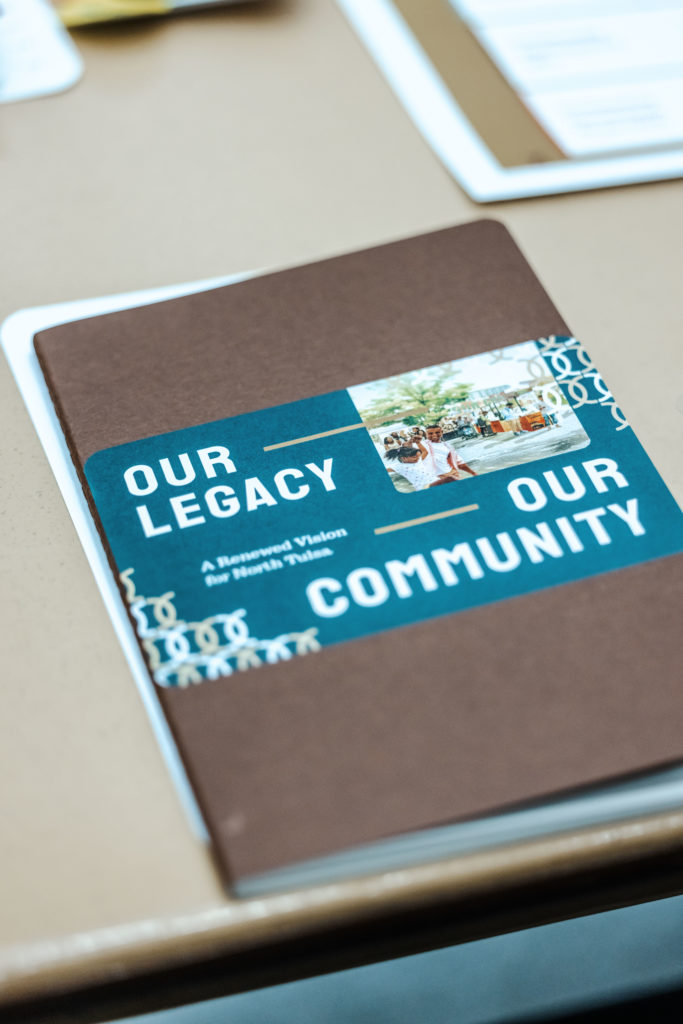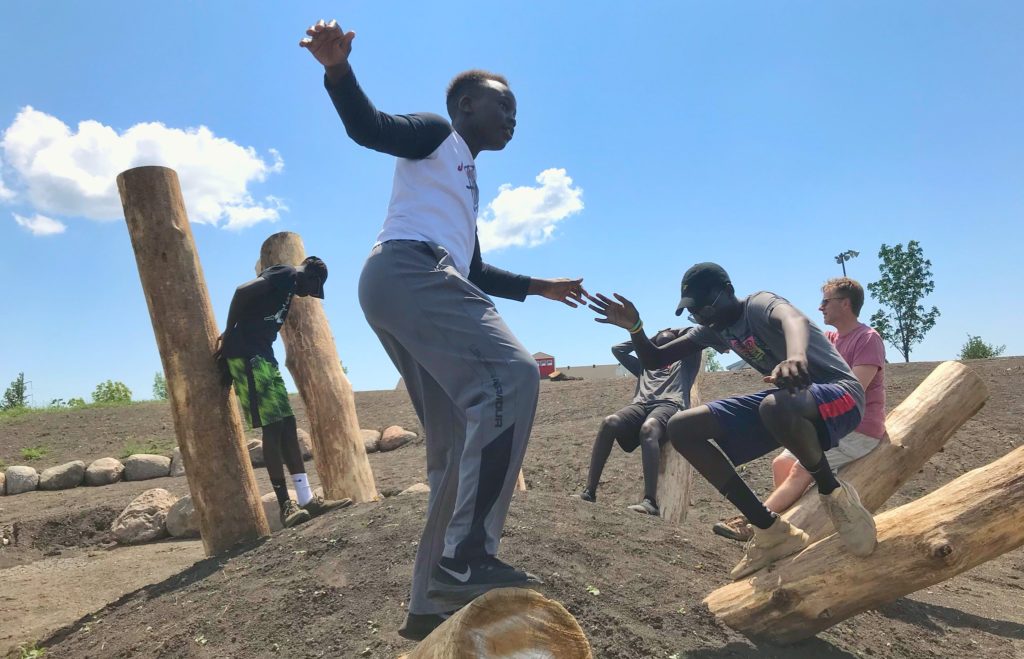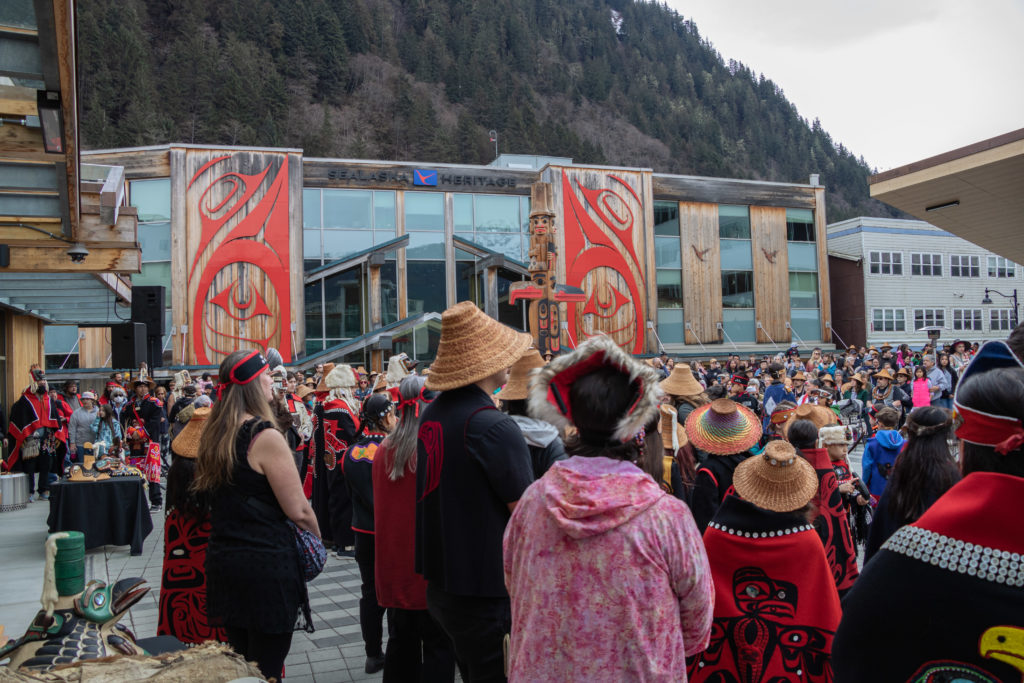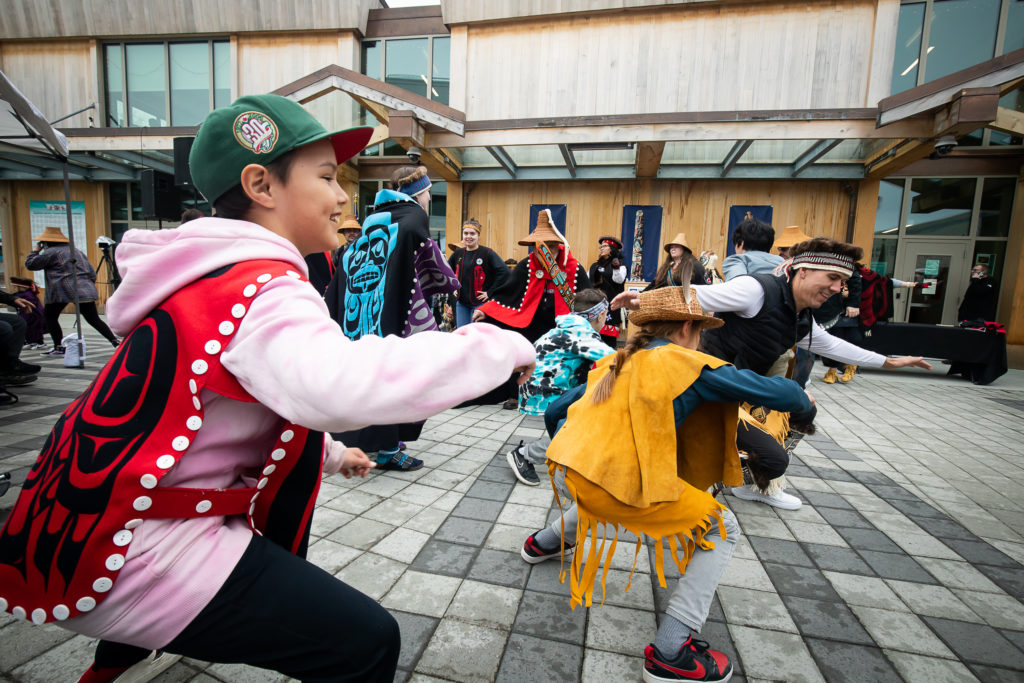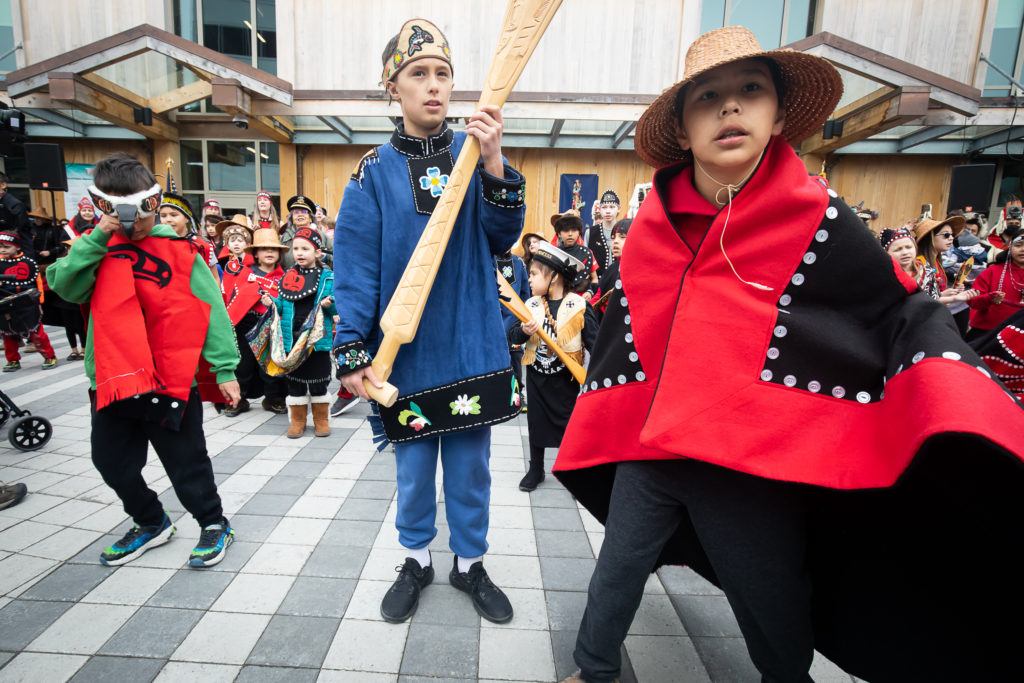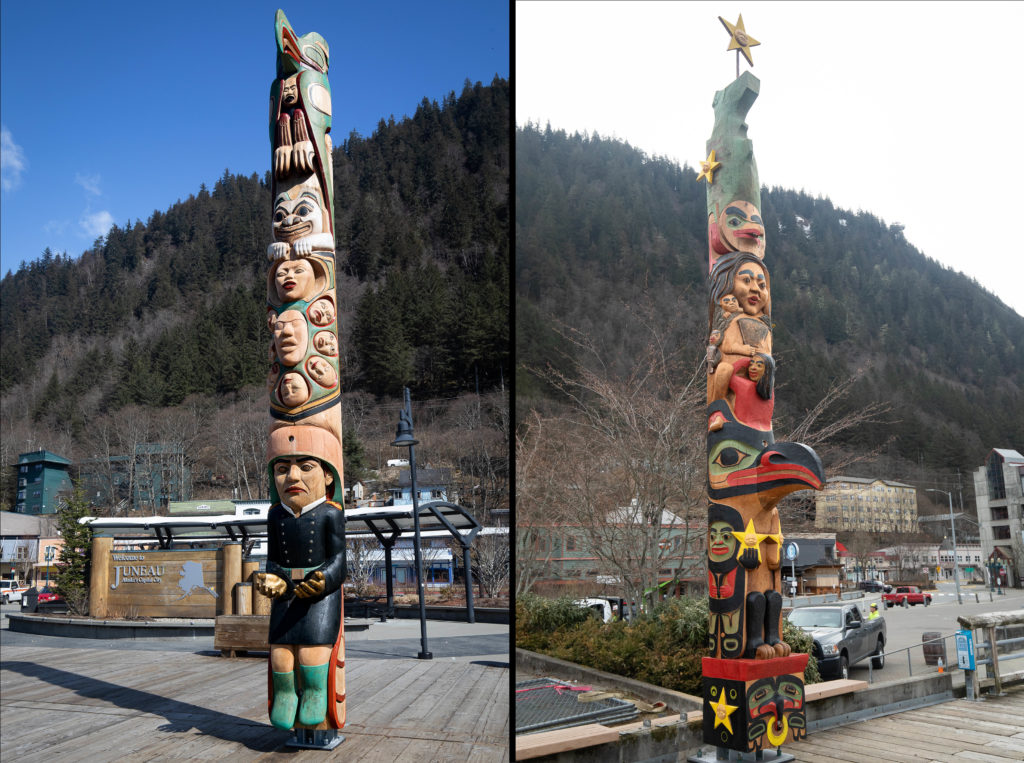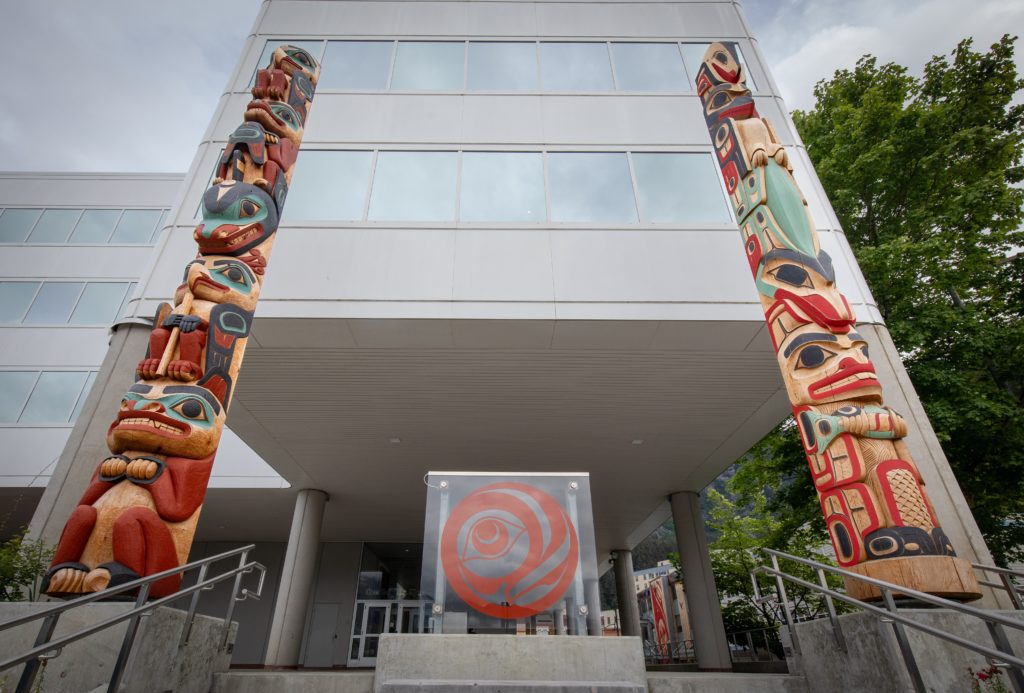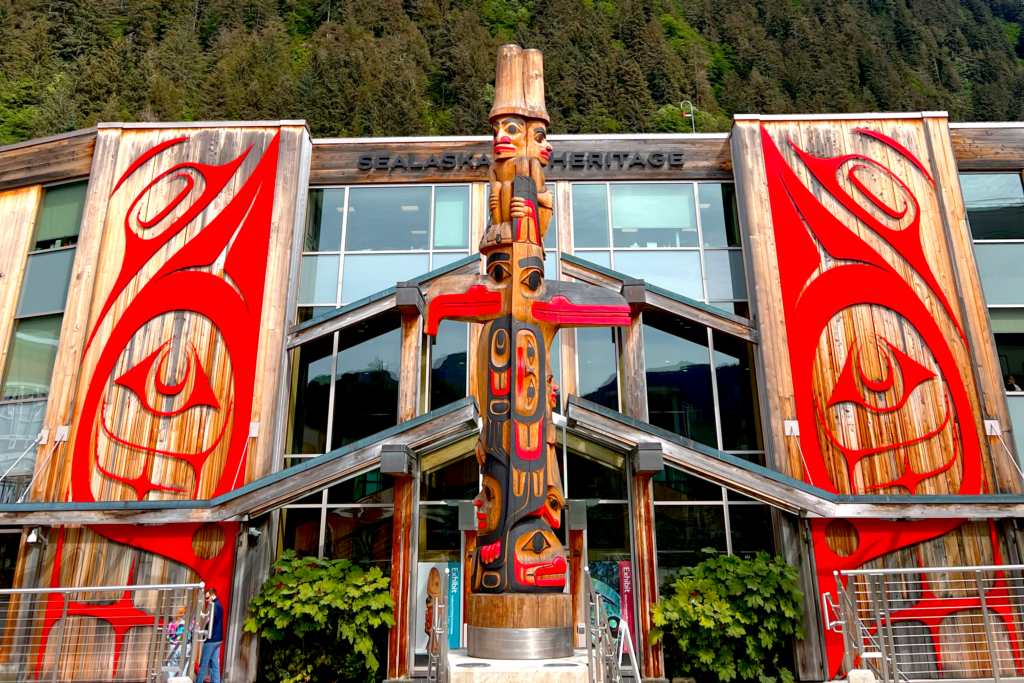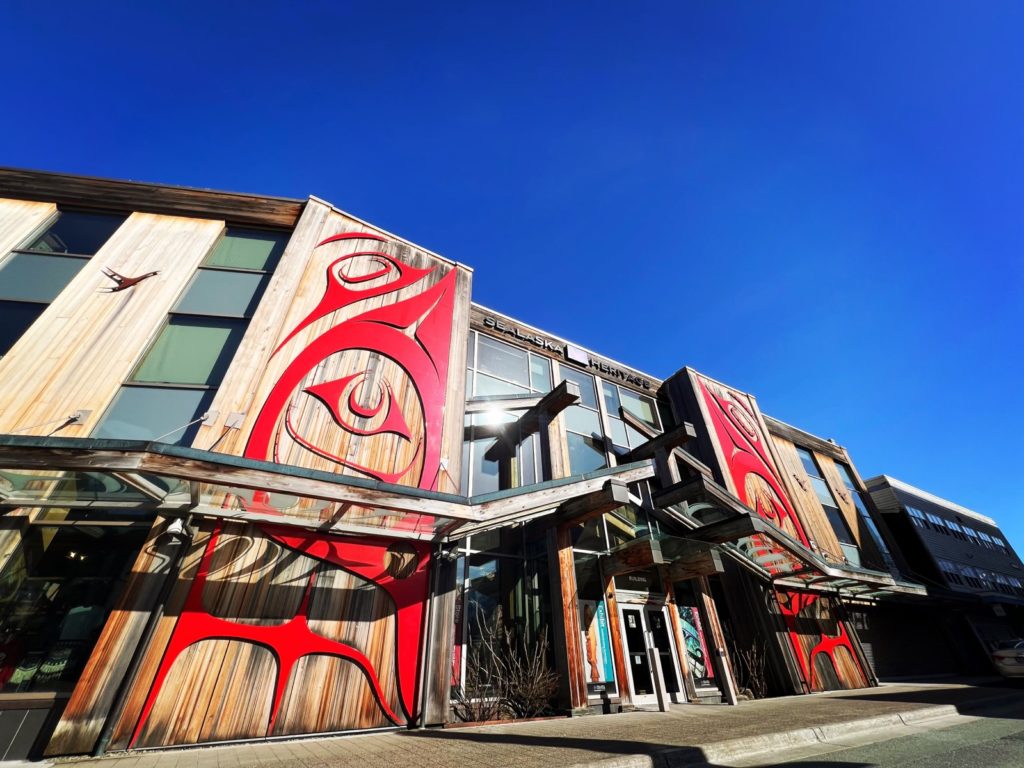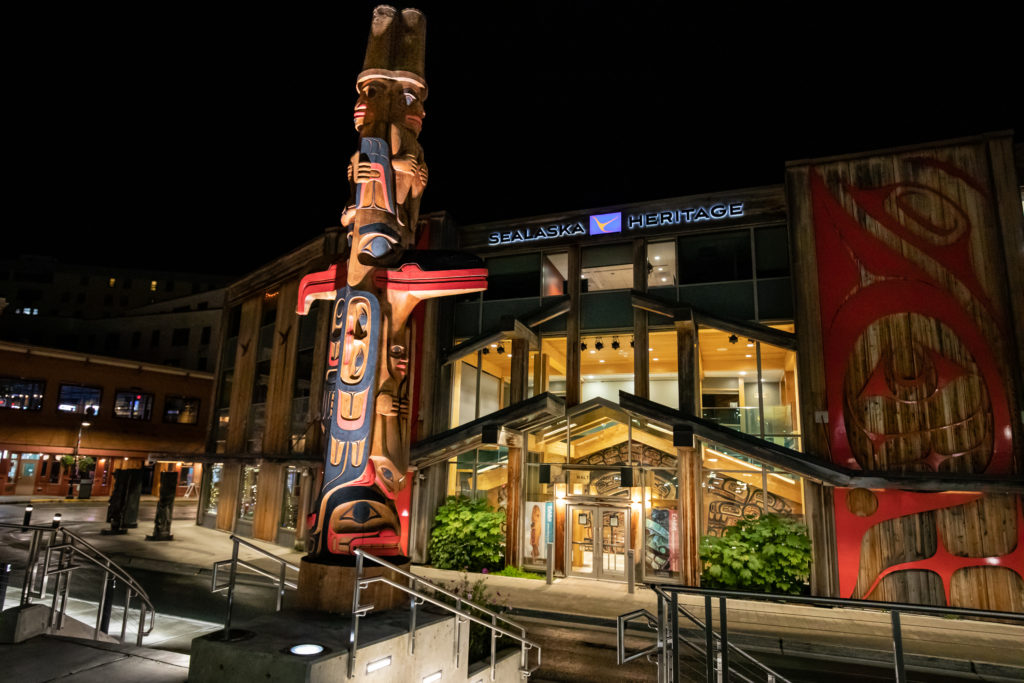Introduction
Along the waterfront in Juneau, Alaska now stands a bold series of totem poles, part of the Kootéeyaa Deiyí, or Totem Pole Trail in Tlingit language. The trail of totem poles, which are traditionally-carved red cedar trees depicting symbolic creatures and images representing a clan’s story, stands as a bold visual marker welcoming visitors and solidifying locals’ knowledge of the Alaska Native tribes and clans who have been continuously living and cultivating traditions in the region for thousands of years. The trail is one of many projects on which the Sealaska Heritage Institute and the City and Borough of Juneau have collaborated, towards the shared goals of establishing the city as a hub for arts in the Northwest Coast region, a gateway through which visitors can experience Alaska, and a dynamic and resilient local economy.
Challenge
In Juneau, much of the visual and spatial evidence of past and current indigenous communities has been erased. While not unlike systematic cultural erasure practices found in many other cities across the country, this absence is particularly noteworthy for Juneau, as the capital of the state with the second-highest percentage of Native American and indigenous populations in the country. In the 1960s, the city destroyed a community of indigenous and multiracial homes and businesses through eminent domain, forcing many Alaska Natives to move out of the city entirely. For a period of time, Alaska Native art was suppressed under the guise that it was pagan and unchristian, and Alaska Native and indigenous peoples are rarely mentioned in school curricula after 1900. These dynamics contribute to a built environment and a dominant public narrative that focuses too little on the harms perpetrated against Alaska Native communities and the incredible vibrancy of their many cultural traditions.
Impact
Just as they did before contact with westerners, totem poles again line the coast of the Tlingit, Haida, and Tsimshian tribal lands now known as Juneau and Douglas Island to welcome visitors and create a clear statement of the ongoing cultural existence and leadership of indigenous peoples in the land. The first 12 of a planned 30 poles carved from the traditional Western Red Cedar trees by 10 Tlingit, Haida and Tsimshian master artists and their apprentices were officially dedicated with a ceremony in April 2023. Ultimately, the 30 poles will represent each of the main clans of the Tlingit, Haida, and Tsimshian tribes. The project received an Our Town grant from the National Endowment for the Arts, as well as funding from the Mellon Foundation.
The project is produced through a partnership between the Sealaska Heritage Institute (SHI) and the City and Borough of Juneau; the city has agreed to maintain the poles going forward, in partnership with SHI and Alaska Native artists. SHI is the nonprofit affiliate of the Sealaska Corporation, which was created by Congress to settle aboriginal land claims. SHI’s goal is to re-indigenize the city and its communities, and to in the process help make Juneau the Northwest Coast arts capital, an engine for the rest of the region, and the gateway to the rest of Alaska.
The location of the totem poles is significant. The two-mile long Seawalk on Juneau’s waterfront is a busy place beloved by residents and where thousands of tourists arrive from cruise ships every day – over a million in total each summer. The totem poles are accompanied by educational storyboards and a QR code taking visitors to a site to further educate locals and visitors about Southeast Alaska Native culture, the totem poles, and the clans they represent.
SHI also created complementary programs to support educational opportunities around the totem poles. When SHI did a call for totem pole master artists to identify the carvers, they found out that only ten remained. Part of the project’s goal is to reestablish the long line of generational wisdom and skill about the meaning and technique of totem pole carving passed down throughout the ages. In order to maximize the impact, SHI created an apprentice program, where those newer to the practice could learn skills and work towards becoming master carvers themselves while helping produce totem poles. They also worked with the Juneau school district to arrange field trips and tie the totem pole trail into lesson plans and curriculum.
Kootéeyaa Deiyí is one of many projects on which the City and Borough of Juneau and SHI have collaborated. This project is part of a holistic approach and shared vision between the two entities of bringing more cultural development and events downtown, and establishing the region’s identity as a center for indigenous arts and culture. Their shared projects seek to bring better jobs, build skills for local artists, and keep wealth local.
City leaders and SHI first began working together closely in 2011, when SHI sought a design variance for a property in a historic district. Despite initial tensions and conflicting visions, the leaders quickly formed a strong working relationship through open communication and creative problem solving. This new dynamic can be credited to dialogue focusing on shared vision and goals, a quantification of SHI’s current and potential economic impact for the city, and a history of following through on promises – all things engendering mutual trust.
In 2015, the resulting Walter Sobeloff Building opened, named for the lauded Tlingit religious leader who died in 2011 at age 102. The building is the centerpiece of a larger SHI arts campus, including murals and a plaza where a wide range of cultural events are held. It contains exhibitions educating visitors about Sealaska indigenous culture, many newly commissioned pieces of art by Alaska Native artists, and the SHI offices. The city ultimately contributed $3 million toward the $20 million capital campaign for the building, and SHI and Juneau city leaders have since collaborated on other pieces of public art and renamed many streets to recognize indigenous heritage.
Lessons for City Leaders
- Supporting native and other cultural heritage unique to a city can aid in key mayoral goals of increasing the authentic profile of a city, rectifying past harms, and expanding the tax base to pay for city services.
- Identifying shared goals between cultural arts organizations and city government is critical to finding common ground and support for cultural arts initiatives.
- Leaders of city government and cultural arts organizations can develop strong and trusting relationships by following through on promises made and by keeping open dialogue.
- Cultural arts organizations can help make the case for city support by quantifying their economic and community impacts.


